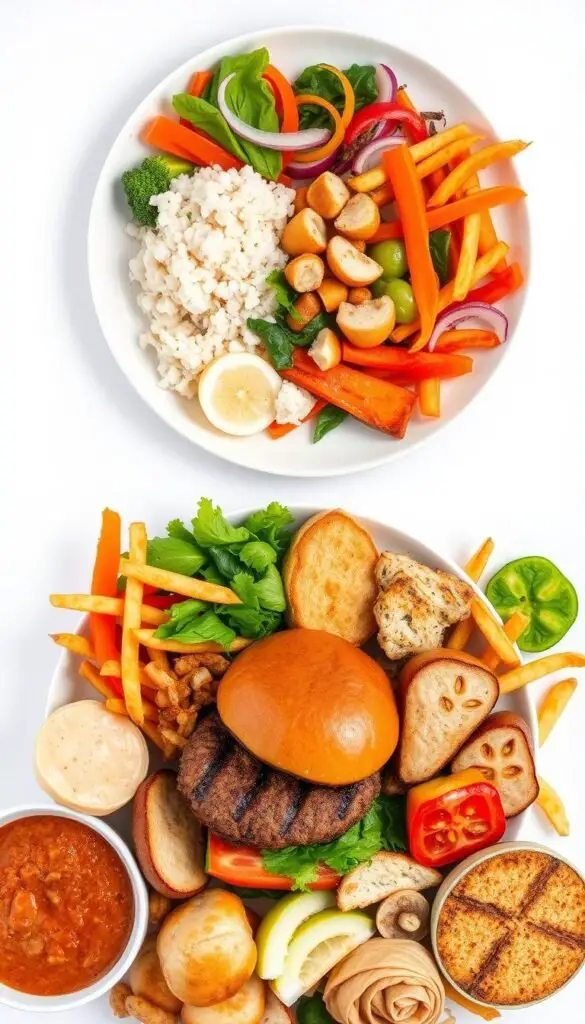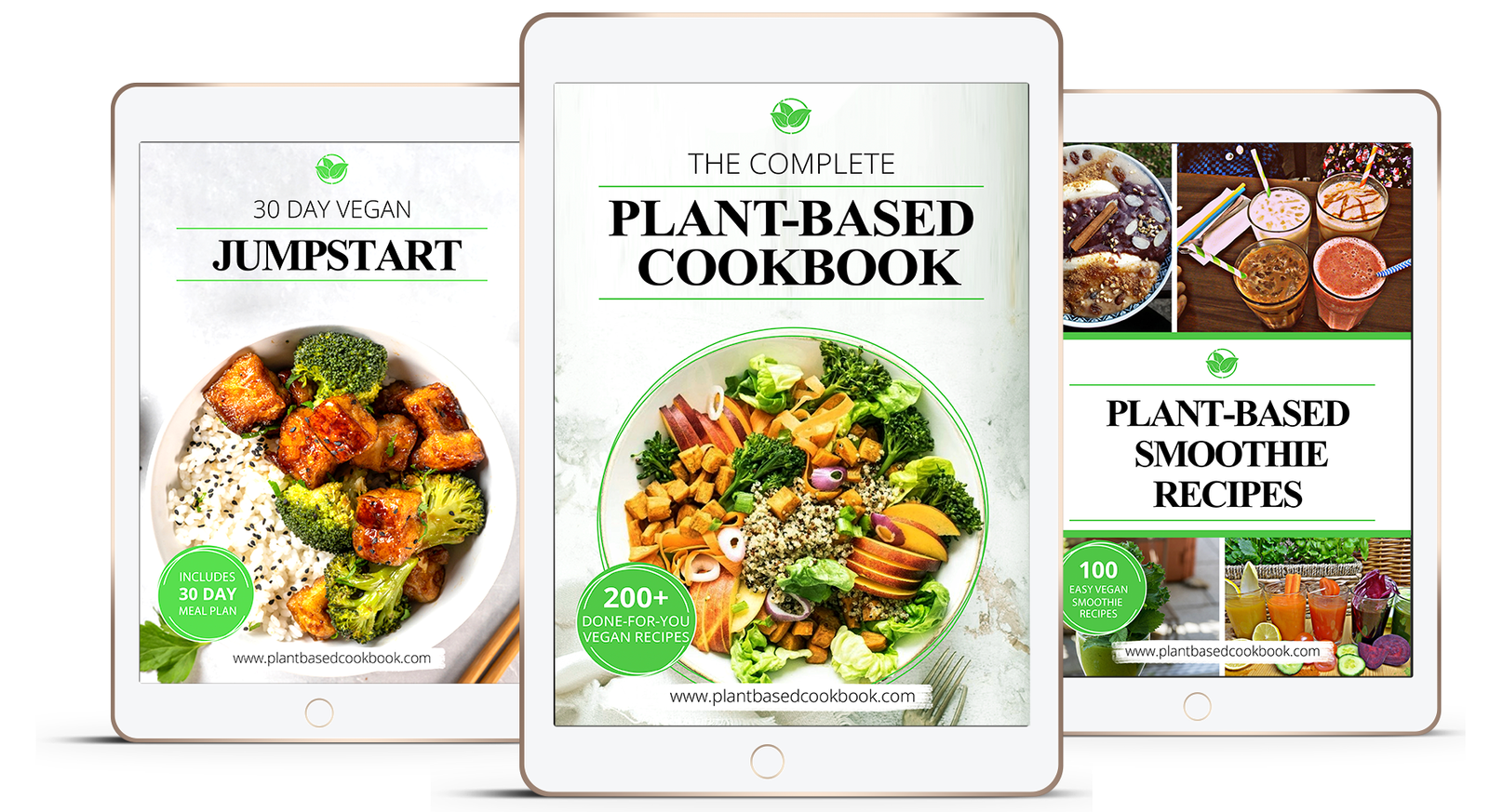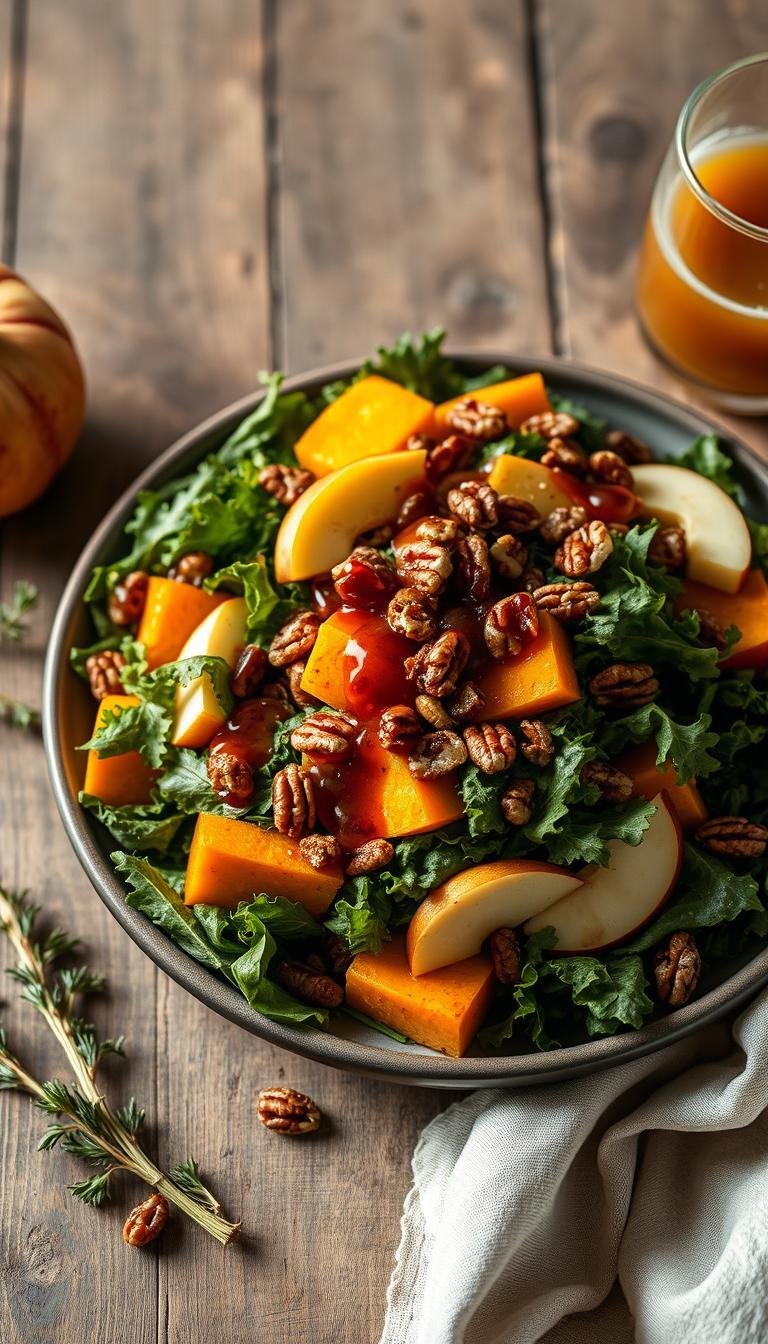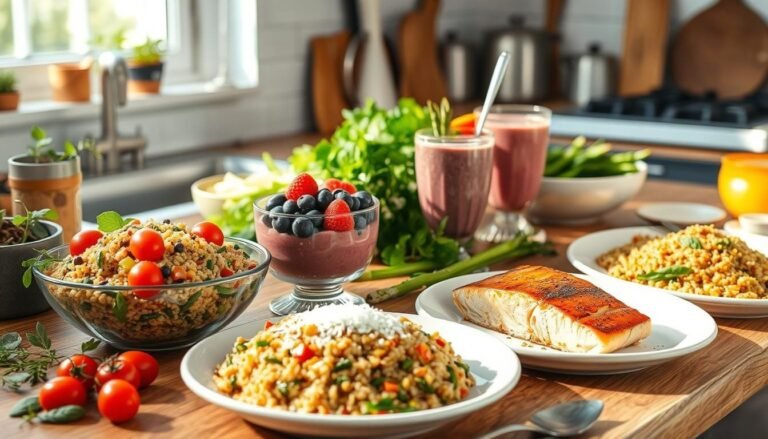(Hey! Some links in this post may be affiliate links — meaning I may earn a small commission if you buy through them, at no extra cost to you. As an Amazon Associate, I earn from qualifying purchases. I only share products I genuinely love and think you’ll find useful too. Read the full disclosure here).
The Asian diet is becoming popular in the U.S. for its tasty flavors and health benefits. It comes from places like Japan, China, Korea, and Thailand. This diet focuses on whole foods, fresh ingredients, and balanced meals.
It includes steamed veggies and savory broths. These foods have been part of communities for many years.
This diet is more than a trend; it’s a way of life. It’s based on eating plants, lean proteins, and less processed foods. This is different from what many in the West eat.
By trying these foods, you can improve your health. You’ll also discover new, tasty flavors.
Contents
- 1 What is the Asian Diet?
- 2 Health Benefits of the Asian Diet
- 3 Key Components of the Asian Diet
- 4 Comparing the Asian Diet to Western Diets
- 5 Cooking Techniques in the Asian Diet
- 6 Incorporating Asian Flavors into Your Meals
- 7 Adapting the Asian Diet for Modern Lifestyles
- 8 Cultural Significance of Food in Asia
- 9 Addressing Common Misconceptions
- 10 Getting Started with the Asian Diet
What is the Asian Diet?
The Asian diet is more than just food—it’s a mix of flavors and traditions. It comes from places like China, Japan, Korea, and Thailand. It’s all about eating whole foods that are good for your body and culture.
From steamed dumplings to spicy stir-fries, Asian food is as varied as the people who make it.

Overview of Traditional Asian Foods
Rice is a key part of many meals, often with noodles, tofu, and fresh veggies. Fish and shellfish are big in coastal areas. Soy products like miso and tempeh add protein.
Think of dishes like sushi (Japan), pad thai (Thailand), or Korean kimchi. Each dish highlights local ingredients and cooking methods.
Key Characteristics of the Diet
- Plant-based foundation: Vegetables, grains, and legumes are the main focus.
- Minimal dairy: Soy-based alternatives like soy milk or yogurt are preferred.
- Moderate protein: Fish, tofu, and lean meats are eaten in balanced amounts.
- Healthful cooking: Steaming, stir-frying, and fermenting help keep nutrients in food.
“The Asian diet emphasizes harmony between food and health. It’s not just about eating—it’s about living well.”
This diet avoids extremes, unlike diets like keto. It’s about making everyday choices that add variety and tradition. Small changes, like trying miso soup or choosing brown rice, can make a big difference.
Health Benefits of the Asian Diet
Trying the asian diet can make you healthier in many ways. It focuses on whole foods and balanced portions. This diet is good for you without being too strict.
Rich in Nutrients and Antioxidants
Traditional healthy asian recipes are full of vitamins and antioxidants. Foods like bok choy and broccoli are rich in fiber and vitamin C. Salmon is a great source of omega-3s, and green tea has catechins that fight stress.
Fermented foods like kimchi are good for your gut. These foods help boost your immunity and lower inflammation.
Potential for Weight Management
- High-fiber foods like brown rice keep you full.
- Asian cuisines often use portion control to avoid overeating.
- Studies show people in countries with asian diets tend to weigh less than Westerners.
Heart Health and Blood Pressure Control
This diet is low in bad fats and high in potassium, which is good for your heart. Foods like tofu and edamame help lower bad cholesterol. Soy sauce alternatives also help keep sodium levels down.
Choosing to steam instead of fry is another heart-healthy choice. These habits are in line with the American Heart Association’s recommendations.

Discovering healthy asian recipes is easy and fun. Try swapping processed snacks for steamed veggies or seaweed salads. Making small changes can lead to big health benefits without losing flavor.
Key Components of the Asian Diet
At the heart of asian food traditions lie simple, nutrient-dense ingredients that fuel both body and culture. Let’s explore the core elements shaping this vibrant eating style.

Whole Grains: Brown rice forms the backbone of many meals, providing fiber and slow-release energy. Quinoa, a newer star in modern kitchens, adds protein-rich options to traditional dishes like stir-fries or salads. Both grains pair perfectly with vegetables, keeping meals balanced and satisfying.
Vegetables & Fruits: Think beyond broccoli—leafy greens like bok choy and kale star in soups and stir-fries. Tropical fruits such as mango and dragon fruit add natural sweetness without refined sugars. These asian ingredients bring color, vitamins, and unique flavors to every plate.
Lean Proteins: Fish like salmon and mackerel shine with omega-3s, while tofu and edamame deliver plant-based protein. Even small portions of shrimp or chicken are paired with ample veggies, ensuring meals stay light yet fulfilling. Tempeh, a fermented soy product, adds probiotics for gut health.
These components create harmony on the plate—grains as anchors, veggies as stars, and proteins as accents. Swap refined carbs for brown rice, or try miso paste in soups for umami depth. Every ingredient tells a story of nutrition and tradition.
Comparing the Asian Diet to Western Diets
Let’s look at how the Asian diet compares to Western eating habits. Traditional asian food aims for balance. Meals are made of grains, veggies, and a bit of protein. Western diets, on the other hand, often have more meat and processed foods. Let’s see what these differences mean.
Dietary Patterns and Nutritional Differences
- Portions: An Asian plate has 50% veggies, 25% grains, and 25% protein. Think of a salmon fillet with bok choy and rice.
- Protein Sources: Seafood and tofu are key, while Western diets often choose beef or pork.
- Cooking Methods: Stir-frying with little oil is used, unlike deep-frying or using lots of butter.

Impact on Health Outcomes
Studies show interesting trends. Countries like Japan, where the Asian diet is common, have lower obesity rates and longer lives. For example, a study found 30% fewer heart disease cases in Asians than in Westerners. But it’s not just about food—it’s also about staying active and eating quality foods.
Making small changes, like adding miso soup or steamed veggies, doesn’t mean a big change. Swapping red meat for fish a few times a week follows the asian diet principles. These choices can help modern eaters find a healthier balance.
Cooking Techniques in the Asian Diet
Asian cooking uses methods that make food taste great and stay healthy. These techniques are based on long-standing traditions. They make eating well easy and delicious.
Stir-Frying vs. Deep-Frying
Stir-frying is a fast, oil-saving way to cook. It uses a hot wok or pan to quickly cook ingredients. This method keeps vitamins in and calories down.
Here’s a tip: prepare all your veggies and proteins before you start. Cook tough veggies first and delicate greens last. This way, your meals stay colorful and full of nutrients.
Deep-frying is mostly for special treats like tempura. It’s not a common cooking method in everyday meals.
Fermentation and Its Benefits
Fermented foods like kimchi, miso, and tempeh are key in Asian cooking. Fermentation uses natural bacteria to preserve food. It also boosts gut health with probiotics.
These foods make minerals like iron in soybeans and vitamins in cabbage easier to digest. Start with store-bought kimchi or try making simple sauerkraut at home. Each bite adds a tangy flavor and supports your health.
Incorporating Asian Flavors into Your Meals
Make everyday dishes pop with the bold flavors of Asian cuisine. Even beginners can make a big difference with simple asian ingredients and asian cooking techniques. Start with these basics to create vibrant, healthy meals without big changes.

Essential Spices and Herbs
Asian pantry staples add depth without extra salt or fat. Try:
- Ginger & Garlic: Zesty roots used in stir-fries, soups, and marinades.
- Scallions & Cilantro: Fresh herbs for garnishing noodle bowls or tacos.
- Lemongrass & Star Anise: Citrusy and sweet notes in soups or roasted dishes.
Most spices last months in airtight containers. Substitute hard-to find items like lemongrass with lime zest for a similar tang.
Popular Sauces and Seasonings
These condiments turn ordinary meals into flavorful creations:
- Soy Sauce: Use low-sodium versions in marinades or drizzled over rice.
- Rice Vinegar: Brightens salads and dipping sauces.
- Miso Paste: Add umami to soups or glazes; refrigerate after opening.
Pair asian cooking staples like sesame oil sparingly—they pack intense flavor. Mix soy sauce with honey for a quick stir-fry glaze.
Experiment by adding ginger to roasted veggies or tossing cilantro into tacos. These asian ingredients blend seamlessly into any kitchen, proving global flavors are within reach.
Adapting the Asian Diet for Modern Lifestyles
Busy lives don’t mean you can’t enjoy the Asian diet. Modern twists on classic dishes make healthy asian recipes easy, even on busy days. You can simplify meals without losing flavor.
Quick and Easy Asian-Inspired Recipes
Choose dishes that take 20 minutes or less. Try these:
- Stir-fried veggies with shrimp and soy-ginger sauce over brown rice
- Vegetable ramen bowls with pre-cooked chicken strips and soft-boiled eggs
- Teriyaki tofu lettuce wraps with pre-mixed sauces
Meal Prep Tips for Busy Schedules
Save time with these tips:
- Batch-cooking grains like jasmine rice or quinoa for weekday use
- Pre-marinate proteins (chicken, tofu) to save 10-15 minutes nightly
- Chop veggies in advance and store in airtight containers
Creating an asian meal plan begins with weekly prep. Use pre-cooked shrimp, roasted veggies, and rice noodles for different lunches. Leftovers can be tomorrow’s stir-fry. Small changes, like swapping chips for steamed edamame, make the Asian diet fit your life.
Cultural Significance of Food in Asia
Food in Asian cultures is more than just food—it connects us to our heritage. The traditional asian diet shows centuries of history. Meals are often linked to rituals, values, and community bonds. Let’s see how asian cuisine brings people together across generations and events.
Celebrations and Traditional Dishes
Special dishes carry meanings of luck, unity, and tradition at festivals. For instance:
- Chinese New Year dumplings (jiaozi) shaped like gold ingots for wealth
- Japanese mochi rice cakes at Lunar New Year for resilience
- India’s kheer rice pudding at weddings as a sweet omen
The Role of Food in Family and Community
Mealtime in many Asian cultures is about coming together. Korean banchan (shared side dishes) and Japanese washoku (culinary harmony) show this unity. Family recipes, like Vietnamese pho or Thai tom yum, share stories and respect for elders.
By embracing these values, even in today’s kitchens, meals become moments of pride and connection. The traditional asian diet is not just about food—it’s a language of love and legacy.
Addressing Common Misconceptions
Exploring Asian cuisine can feel overwhelming when myths overshadow the truth. Let’s set the record straight on common myths and simplify unfamiliar concepts.
Myths About Asian Cuisine
- Myth: All dishes are loaded with sodium. Fact: Home-cooked meals often use less salt than restaurant versions.
- Myth: Everything must be fiery hot. Fact: Spices like ginger or star anise add flavor without heat.
- Myth: MSG is always harmful. Fact: Moderate use aligns with FDA guidelines, and many dishes use it sparingly.
Understanding Ingredients and Preparation
Unfamiliar asian ingredients like miso or daikon deserve a closer look. Tofu, rich in plant protein, works in stir-fries or salads. Fermented foods like kimchi boost gut health by making nutrients easier to absorb. Even small substitutions—like using local veggies in a Thai curry—keep meals authentic yet adaptable.
Experimenting with Asian ingredients doesn’t require perfection. Swap soy sauce for low-sodium versions, or try store-bought pastes to simplify prep. The goal is enjoyment, not strict adherence.
Getting Started with the Asian Diet
Ready to try the Asian diet? Start with small steps and enjoy the ride. Try swapping white rice for brown or adding more veggies to your meals. Make changes that feel good, not too hard.
For example, add kimchi as a side or use tofu instead of meat a few times a week. This can help you get started.
Tips for Transitioning Your Diet
Give yourself 2-4 weeks to start. Try having a plant-based meal once a week or switch to whole grains in your favorite dishes. Visit Asian grocery stores for fresh ingredients like bok choy or shiitake mushrooms.
Focus on flavors you like, like ginger, soy sauce, or sesame oil. This makes new dishes feel more familiar. Remember, it’s about making progress, not being perfect.
Resources for Recipes and Meal Plans
Check out sites like Epicurious or AllRecipes for healthy asian recipes. Apps like Yummly let you create your own asian meal plan. Blogs like Oh She Glows have great vegetarian ideas.
YouTube channels like Maangchi or Bong Eats are great for learning cooking skills. Local libraries often have cookbooks like “The Asian Grandmothers Cookbook” for more cultural insights.








